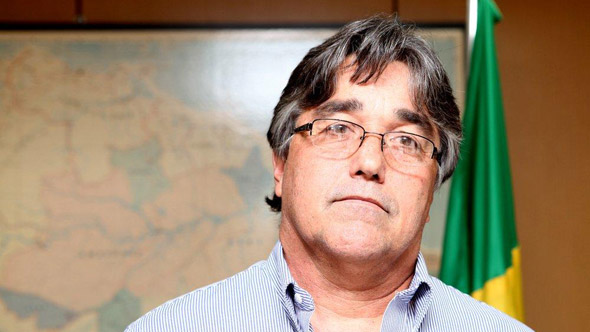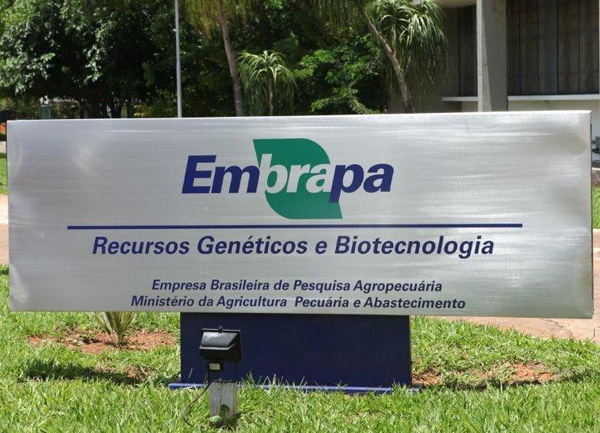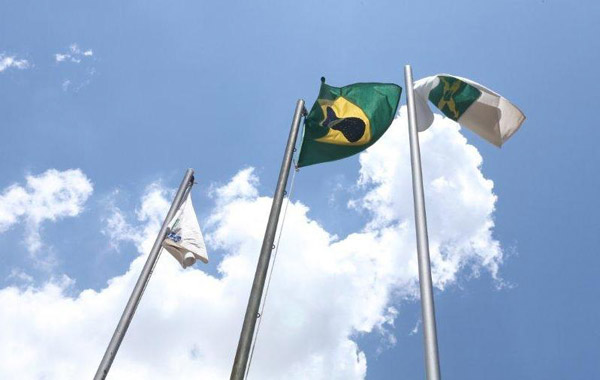Brazil’s Agriculture: Embrapa is Leading Agricultural Research in Brazil
Pedro Arraes, President of Embrapa
Pedro Arraes talks about Embrapa and how the public institution linked to the Ministry of Agriculture was created as a strategy from the government to hamper the food crisis scenario and give support to growth in the agricultural sector.
Interview with Pedro Arraes, President of Embrapa

From 2008, there has been a significant spike in prices of basic commodities. Brazil went from being an importer to being a major exporter of these goods. Can you talk about the Brazilian success story in agriculture?
We are aware that we have to produce food to feed not only the growing Brazilian population but also some fraction of the 9 billion world population, while caring about the environment.
To a great extent, these huge changes in Brazilian agriculture were connected to the increase in the demand side, prompted by the Government-led industrialization process started in the decade of 1960, which was associated with a growing population of higher income and a rapid urbanization process. In the early seventies, Brazil was a big importer of staple foods and there was food insecurity in the country. The opportunities for agricultural expansion in traditional areas were becoming limited and it was necessary to create a new era for the sector, based on national science aimed at tropical conditions. So, the main Government strategy to hamper the food crisis scenario and give support to growth in the agricultural sector was creating Embrapa as a public institution linked to the Ministry of Agriculture, Livestock and Food Supply.
Parallel to the structural build-up of Embrapa centers, there was the audacious decision of recruiting a thousand of recent graduates which had been top students and send them abroad to be trained in the best universities in the U.S., the U.K., France, Australia, and Japan, among other places. Those well-trained researchers came back to Brazil and played a decisive role in setting up the basis for the high scientific level of the Corporation.
Another strong asset was Embrapa´s focused research model, allowing to direct efforts to products, ecosystems and themes of importance to the development of the country. Our research units, which now total 47 in number, are distributed throughout the national territory and are specialized in products (maize and sorghum, soybean, etc.), resources (Cerrado, Semi-arid, etc.), and themes (Environment, Satellite Monitoring, etc.). This network, aided by the other branches of the National Agricultural Research System (State operated research institutes and universities) is devoted to supporting a competitive agricultural sector and to providing Brazilian people with good food quality and quantity at affordable prices. Indeed, in the last four decades real food prices (adjusted to inflation) to Brazilian consumers was decreased by half, greatly reflecting the increase in agricultural production, driven predominantly by productivity increase.
Agriculture itself tends to be, sometimes, cyclical. At the end of the 1970s, there was a spike, and then prices tumbled down. Could something similar happen twenty years from now, and how do you see the future of Brazilian agriculture?
It is difficult to say. Some analysis forecasts indicate that food prices will be at historically high levels in the following decade. We might also have to cope with food price volatility. But, again, it is difficult to forecast when those price movements will take place and in what direction. Climate change may be a strong driving factor that has to be mitigated. Another factor to be considered is the increase in consumption driven by income increase. The good news is that the developing world is becoming wealthier. In Brazil, for instance, around thirty million people rose into the middle class. They will require more supplies, more food. Other numbers say that Brazil will have to account for 40% of the increase in world food demand by 2020 and we have to be prepared to meet this challenge!
Can you talk about your international ambitions?

Embrapa was born international; as I already explained, the first thing our first leaders decided was to send over a thousand people abroad to be trained at centers of excellence. Now we have a very clear strategy in terms of international cooperation, acting through three pillars.
The first is what we call “scientific cooperation.” We have a very innovative system called Labex, where we develop joint projects with Agropolis, ARS, and other research institutions, in strategic and cutting-edge areas to advance agricultural innovation and to break barriers. Within this framework, our staff is able to do collaborative research at the best universities and laboratories in the world.
The second pillar is what we call “technical cooperation;” this is also a win-win relationship. We develop structural projects in developing countries, like Mozambique and Mali, in close partnership with international organizations and cooperation agencies, such as JICA.
We have recently established a new Embrapa center focused in strategic studies and capacity-building in Brasilia. There we have been receiving scientists, technicians and administrators from Africa, Latin America and even Asia, to receive specialized training in tropical agriculture. The experience has proved very valuable, serving as a privileged forum for exchange of experiences and ideas among countries. Another new project is the Africa-Brazil Innovation Marketplace, an electronic platform for scientists from developing countries to come together with Embrapa’s scientists. Bill Gates recently announced that he would donate 2.5 million dollars to this program.
The third pillar is a business approach, consisting in technological support to private companies who want to develop agriculture in developing countries. This is not our major goal, since we are a public corporation, but we do think it’s important to develop activities in this area.
How is Embrapa financed?
We are mostly financed by the Brazilian government, but we do receive resources from private sources as well. A joint project developed with CGIAR/ASTI showed that in the period 2000–2007, close to 90 percent of Embrapa’s funding was provided through direct government allocations, 4 percent was generated through the sales of products and services (that is, seeds, royalties, and research contracts with private and public organizations), and 2 percent derived from other external sources. In addition to this direct funding, Embrapa receives indirect funding from partners in agricultural research and technology transfer activities.
What are the biggest challenges Embrapa faces?
We have many challenges. Embrapa is an institution which aims to keep serving Brazilian and world societies for a long time. In order to do that, we have to foresee possible scenarios and be prepared to face new challenges. By 2013, Embrapa will be 40 years old and more than 75% of our personnel will have been renewed. Most of the pioneers have already retired and more than 1500 new researchers have been hired. So, we are investing heavily in human resources, thinking not only on immediate needs but also in future ones. Although the new staff possesses a very solid academic background, we have to give them time to acquire scientific experience and institutional culture.
A main future challenge for research is clearly and objectively identifying the sequence of relevant problems that shall be solved by research to increase welfare in society. In the beginning, Embrapa’s focus was on how to produce greater quantities of food; now we have environmental concerns to consider as well. Given current and future societal demands, it is necessary to stimulate productivity growth and the development and/or adaptation of resource-saving (land, water, nutrients) technologies that, while boosting production growth, will also protect the environment and use resources more efficiently.
We are working on a project now called “Green Embrapa”, where we are developing tools for farmers and technicians to evaluate the production system, to analyze how much carbon is returned to the soil and how much is released into the air, and so on. If a farmer uses a system that is retaining much more carbon in the soil, he might be paid an amount by reason of an environmental service in the end.
Another big challenge is to be ahead of time in the areas of cutting-edge technology, like biotechnology and nanotechnology.
How do you envision Embrapa in five years’ time?
We already have a solid reputation and an important infrastructure. Our more than 500 laboratories and 90 experimental stations scattered over the country have been upgraded and inserted into quality management system. We have built five new research centers to cope with new agricultural challenges. Five years from now, our young staff will be more mature. So I think we have all the tools to design good projects and to contribute to Brazilian and to global agriculture as well.
We are aware that we have to produce food to feed not only the growing Brazilian population but also some fraction of the 9 billion world population, while caring about the environment. Brazil´s huge increase in production and productivity of agricultural goods is attributed, in great part, to science. In the upcoming 10 years, we expect to double these increases, while using less land and utilizing the land even more efficiently.
Are you confident that you and the world will be able to feed these 9 billion people?
Absolutely. One clear-cut case of Embrapa’s achievements is the transformation of the Brazilian Cerrado from an invaluable land into Brazil’s grain and meat leading producer. This was attained through the adoption of a large portfolio of technologies: soil improvement, new crop and pasture varieties and improved productivity of farm animals, mainly beef and dairy cattle. All of this, together, created what we call the “Third Green Revolution”. This experience can be replicated in African Savannahs, for instance, strongly contributing to a sustainable increase in food production and even creating surpluses to be exported.
In cutting-edge technology, world science has experienced many breakthroughs that, in the long term, may leverage yields while being environmentally conscious. We are confident that we can do it and much more, so that Brazilian agriculture and research may be recognized as an important anchor of the world food system. Partnerships in research, in a broad sense (among countries, public institutions and also public-private initiatives) will be a key to increase investments in research, thus expanding the universe of knowledge and technologies available to the farmer, especially the smallholders who are the ones in most need.